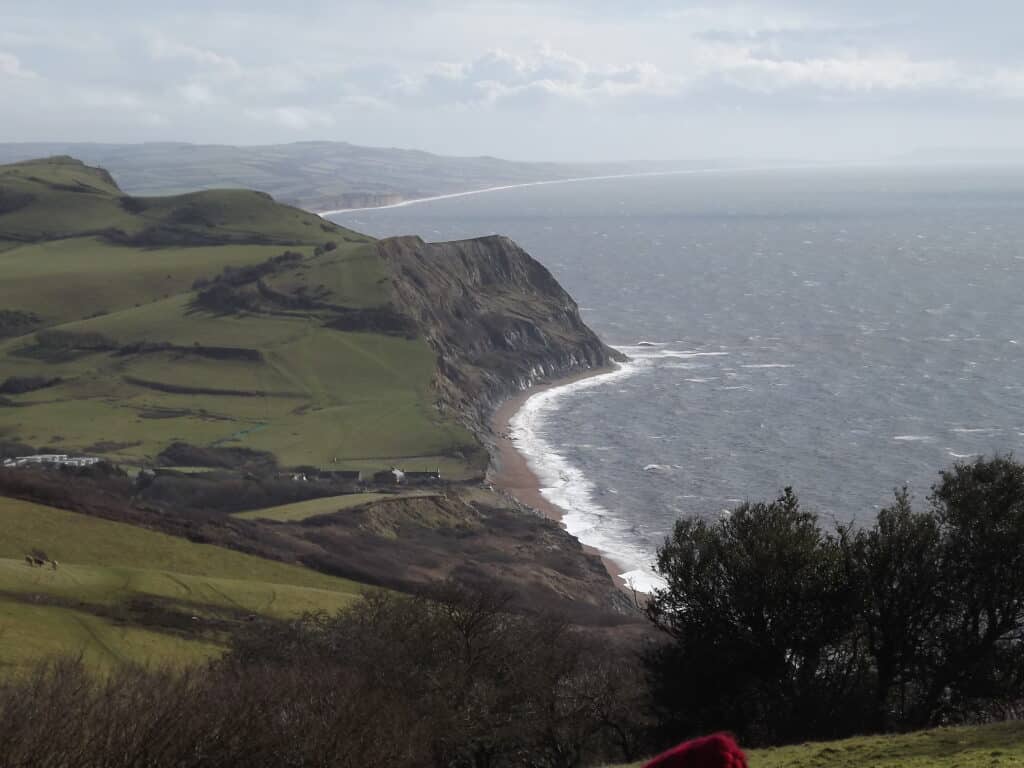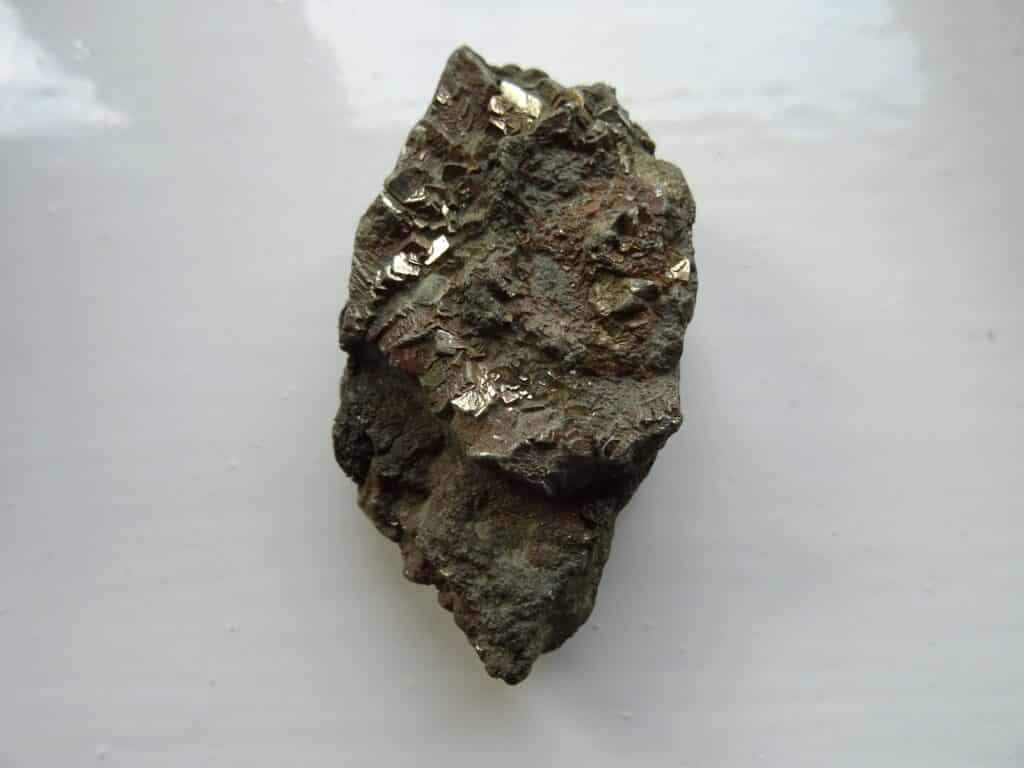Continuing west from Seatown you will notice the large blocks of rock armour that protect the property above the low clay cliff as seen in the picture below. Without the rock armour the clay cliff would be eroded and the property (toilets and the Anchor Inn) would be in grave danger.

The rock armour is worth a look. It is Carboniferous Limestone, probably brought from the Mendips in Somerset and contains fossil corals. The Carboniferous Limestone is approximately 325-350 million years old and formed in a shallow tropical sea when what we now call Britain was more or less on the Equator. The picture below is a view of part of one of the limestone boulders and shows the common colonial coral Lithostrotion. Other corals occur as do crinoids (also called sea lilies). You might wonder why use Carboniferous Limestone when Portland Limestone is available. The Carboniferous Limestone is older, has had a longer geological history and is a crystalline limestone so is rather stronger and more resistant to wave attack.

The clay seen initially at beach level is called the Green Ammonite Member (formerly Green Ammonite Beds) and is part of the Lower Lias (Lower Jurassic). In my experience it is not particularly fossiliferous and what fossils there are tend to be crushed. The name Green Ammonite Member comes from the fact that some ammonites found have their chambered shell filled with green tinted calcite (instead of the normal white or colourless form which is much more common). The clay is often very contorted due to landslips and periglacial conditions (freeze-thaw) during the cold periods of the Pleistocene. Clay flows and slumps are also very common bringing down clay from higher up the cliff (Eype Clay)
Further along the beach the unit below the Green Ammonite Beds, the Belemnite Stone is exposed at beach level in a very shallow anticline (dome shaped fold). In this unit belemnite guards (bullet shaped fossils) are very common. Occasionally the beach shingle can be washed away and a spectaculardisplay of belemnite rich limestone occurs seen in the pictures below taken in February 2007. Crinoids also occur including the star shaped form Pentacrinus.


Walking along the beach you can sometimes see evidence of faults in the cliff where the beds have been displaced by earth movements. Stretching of the earth’s crust has produced normal faults. The beds have been slightly displaced and white calcite veins often follow the line of the faults. The faults are not always this clear because of slumping down the cliff from above covering the rock face.

On reaching Golden Cap there is a bit of a scramble over the boulders to reach the other side. Landslips over many years, decades, centuries or possibly millennia have brought sandstone blocks down to beach level creating a form of natural rock armour. Golden Cap seen in the first picture of this instalment has a capping of Cretaceous Upper Greensand over Lower and Middle Lias Clays forming a feature that geologists call an unconformity, a gap in the rock succession, in this case 80-90 million years. The capping of more resistant sandstone has helped to make Golden Cap the highest cliff on the south coast of England at 191 m. above sea level. This results in fine views to the east and west if you follow the coast path rather than walking the beach. The top can also be reached from the National Trust car park at Langdon Hill of the A35. In the view below you can see the view along the coast to East Ebb, the sandstone cliffs at Burton Bradstock, Chesil Beach and Portland in the distance. The second picture is of the view to the west with Charmouth, Lyme Regis and the Undercliff round to Seaton in Devon.


If you walk / clamber through the boulder field below Golden Cap you may find small pyritised ammonites and pieces of the mineral pyrite (fool’s gold). When it is fresh it is crystalline (with cubic crystals) and gold in colour but in time the pyrite rusts in the atmosphere.

Alan Holiday
PLEASE SUPPORT US FOR JUST £2 A MONTH





